Asian Art Museum asks life's biggest questions in 'Divine Bodies'
The Buddhist deity Guhyasamaja (detail), approx. 1400–1500. China; Beijing, Ming dynasty (1368–1644). Bronze with gilding. Asian Art Museum, The Avery Brundage Collection, B64B23. Photograph © Asian Art Museum.
SAN FRANCISCO, CA.- The human form in art has always helped shape how we answer life’s biggest questions: Where do we come from? Why are we here? Who are we? What happens when we die? In response, from March 9 through July 29, 2018, the Asian Art Museum presents Divine Bodies, bringing together nearly 70 large-scale historical sculptures and paintings from Hindu and Buddhist traditions, along with contemporary photo-based work. This original exhibition invites us to dwell on these mysteries as we ponder the power of transformation, the possibility of transcendence, and the relationship of our bodies to the cosmos.
“Divine Bodies presents masterpieces from 1500 years ago to today, from what is now India, Pakistan, and the wider Buddhist world, to engage visitors in a real conversation,” explains Qamar Adamjee, the museum’s Malavalli Family Foundation Associate Curator of Art of the Indian Subcontinent. “These artworks demand that we contemplate our role in a larger cosmology by asking, ‘How we can see the human in the divine and the divine in the human?’
Artists from across Asia have long depicted deities — Hindu gods and goddesses, Buddhas and bodhisattvas, from the gentle to the fierce— in carnal human form. Their familiar facial features and unexpectedly corporeal figures allow mortals to relate to immortals, establishing an ongoing interaction between human and divine bodies: between material and ethereal, physical and metaphysical, finite and infinite.
“The idea is that by contemplating physical beauty, devotees experience the metaphysical beauty behind such images,” says exhibition co-organizer Jeff Durham, Assistant Curator of Himalayan Art, and a practicing yoga instructor. “A statue is not just a statue: the exhibition encourages us to look at these artworks as devotional images imbued with real divine potency and reminds us of our own spiritual agency on the path to enlightenment.”
In addition to traditional depictions of sacred forces, Divine Bodies also presents four series from contemporary Indian photographers — Gauri Gill, Dayanita Singh, Pamela Singh, and Vivan Sundaram — as well as video work from American-Korean duo David and Hi-Jin Hodge. An extensive presentation of photography for the Asian Art Museum, these works together address an issue central to the exhibition: How can we discover meaning in an ever-changing, impermanent world?
These award-winning photographers are widely celebrated in their home country. From deeply personal stills of 20th-century graves, to images of temples and worshippers wittily reworked with pen and ink, the mostly black and white selection of photographs provides a familiar foothold to explore the rich theology underlying Divine Bodies.
In the most well-known series, Myself Mona Ahmed (1999–2017), photographer Dayanita Singh documents the life of a “eunuch” and member of Delhi’s hijra community. Born male and self-identified as female, hijra are considered a third sex in India and are simultaneously shunned and revered as close to the divine, capable of containing — like several important Hindu deities on view in Divine Bodies — both male and female cosmic forces.
“Artists like Dayanita Singh document the centrality of the human body to our understanding of ourselves and our place in the universe,” says Karin G. Oen, Assistant Curator of Contemporary Art and an exhibition co-organizer. “At the same time, like a religious experience, Mona’s difficult life offers us a glimpse of transcendence within selftransformation, a parable for what happens when we embrace what lies beyond the material world as it is given to us.”
By putting the human at the center of the exhibition as much as the artwork on view, Divine Bodies invites visitors to draw connections to their own lives and inspires personal interpretations.
“Viewing divine bodies from China, India, Thailand, Tibet, Indonesia, Pakistan and other regions side by side reveals truly universal themes as well as culturally specific ideals of beauty and godliness,” says Asian Art Museum director and CEO, Jay Xu. “You don’t have to be an adherent of these faith traditions to grasp the power and meaning of these incredible devotional artworks.”
The Asian Art Museum is the only venue for Divine Bodies.
Head of a buddha, probably 618-800, China, Tang dynasty (618-907). Limestone; Medium gray, fine-grained, oolithic. H. 16 in x W. 10 in x D. 10 1/2 in, H. 40.6 cm x W. 25.4 cm x D. 26.7 cm. Asian Art Museum, The Avery Brundage Collection, B60S31. Photograph © Asian Art Museum.
Cosmic Buddha, China, Tang dynasty (618-907). Stone. H. 41 in x W. 18 in x D. 16 in, H. 101.14 cm x W. 45.7 cm x D. 40.64. Asian Art Museum, The Avery Brundage Collection, B61S66. Photograph © Asian Art Museum.
The Buddhist great adept Virupa, approx. 1400-1450, Ming dynasty (1368-1644), China, Beijing. Gilded bronze. H. 10 1/2 in x W. 10 in x D. 6 1/2 in, H. 26.7 cm x W. 25.4 cm x D. 16.5 cm. Asian Art Museum, The Avery Brundage Collection, B62B20. Photograph © Asian Art Museum.
The Buddhist deity Guhyasamaja, approx. 1400-1500, Ming dynasty (1368-1644), China, Beijing. Gilded bronze. H. 26 in x W. 18 in x D. 12 1/2 in, H. 66 cm x W. 45.7 cm x D. 31.7 cm. Asian Art Museum, The Avery Brundage Collection, B64B23. Photograph © Asian Art Museum.
Miniature buddhist stupa, approx. 1700-1800, Qing dynasty (1644-1911), China. Bronze with traces of gilding. Bronze with traces of gilding. Bronze with traces of gilding. H. 16 1/8 in x Diam. Base 7 1/4 in x 7 1/4 in. Asian Art Museum, The Avery Brundage Collection, B61B13. Photograph © Asian Art Museum.
Li Tieguai, one of the Eight Immortals, Reign of the Qianlong emperor (1736-1795), Qing dynasty (1644-1911), China, Fujian province. Porcelain, Dehua ware. H. 12 1/2 in x W. 5 in x D. 4 in. Asian Art Museum, The Avery Brundage Collection, B60P1788. Photograph © Asian Art Museum.
A form of the bodhisattva Maitreya (Budai Heshang), Qing dynasty (1644-1911), China, Dehua, Fujian province. Glazed porcelain. H. 5 in x W. 7 1/4 in x D. 5 1/4 in, H. 12.7 cm x W. 18.4 cm x D. 13.3 cm. Asian Art Museum, The Avery Brundage Collection, B60P1788. Photograph © Asian Art Museum.
Railing pillar with female figure beneath a tree, approx. 100-200, India, Uttar Pradesh state, Mathura region, Kushan style. Sandstone. H. 27 1/4 in x W. 6 1/2 in x D. 6 1/4, H. 69.2 cm x W. 16.5 cm x D. 15.9 cm. Asian Art Museum, Gift of the Atholl McBean Foundation, B69S13. Photograph © Asian Art Museum.
One-faced linga, approx. 400-450, India, Madhya Pradesh state. Sandstone. H. 58 in x W. 10 in x D. 14 1/2 in, H. 147.3 cm x W. 25.4 cm x D. 36.8 cm. Asian Art Museum, Museum purchase, B69S15. Photograph © Asian Art Museum.
The Hindu god Shiva with the goddess Parvati, approx. 600-700, India, Bihar state, Pala style. Stone. H. 21 in x W. 14 in x D. 6 3/4 in, H. 53.3 cm x W. 35.6 cm x D. 17.1 cm. Asian Art Museum, The Avery Brundage Collection, B62S9. Photograph © Asian Art Museum.
The Hindu deity Chamunda, 800-1000, India, Rajasthan state. Sandstone. H. 23 in x W. 15 in x D. 7 in, H. 58.4 cm x W. 38.1 cm x D. 17.8 cm. Asian Art Museum, The Avery Brundage Collection, B62S39. Photograph © Asian Art Museum.
Head of a Buddha, approx. 900-1100, India, Bihar state, Pala style. Brass with traces of inlaid copper and gilding. H. 15 3/4 in x W. 11 1/2 in x D. 8 1/2 in, H. 40.0 cm x W. 29.2 cm x D. 21.6 cm. Asian Art Museum, cquisition in memory of Stuart Harvey made possible by Forrest Mortimer with assistance from friends of Mr. Harvey's, 2001.30. Photograph © Asian Art Museum.
The Hindu deities Shiva and Parvati combined as Ardhanarishvara, India, Madhya Pradesh state, 900-1100. Sandstone. H. 26 in x W. 12 1/2 in x D. 5 in, H. 66.0 cm x W. 31.7 cm x D. 12.7 cm. Asian Art Museum, The Avery Brundage Collection, B73S16. Photograph © Asian Art Museum.
The Hindu deity Vishnu in the form of a boar, approx. 1000. India, probably Northern Rajasthan state. Stone (schist). H. 32 11/16 in x W. 17 1/4 in x D. 6 in, H. 83 cm x W. 43.8 cm x D. 15.2 cm. Asian Art Museum, The Avery Brundage Collection, B62S15. Photograph © Asian Art Museum
The Hindu deity Parvati, approx. 1050-1100, India, Jaynagar-Hasanpur, Bihar state, Pala style. Basalt. H. 44 in x W. 25 in x D. 10 1/2 in, H. 111.8 cm x W. 63.5 cm x D. 26.7 cm. Asian Art Museum, Museum purchase, B67S2. Photograph © Asian Art Museum
The Hindu deity Shiva revealed in the linga, approx. 1050-1150, India, Tamil Nadu state, Chola style. Granite. H. 49 1/2 in x W. 16 in x D. 12 in, H. 125.7 cm x W. 40.6 cm x D. 30.5 cm. Asian Art Museum, The Avery Brundage Collection, B65S3. Photograph © Asian Art Museum
The Buddhist deity Vajra Tara, 1075-1200, India, perhaps Nalanda, Bihar state, Magadha region, Pala style. Basalt. H. 39 1/2 in x W. 23 1/2 in x D. 9 in, H. 100.3 cm x W. 59.7 cm x D. 22.9 cm. Asian Art Museum, The Avery Brundage Collection, B65S3. Photograph © Asian Art Museum
The Hindu deity Vishnu, 1200-1300, India, Karnataka state, Hoysala style. Stone (chlorite schist). H. 41 1/2 in x W. 22 1/2 in x D. 11 3/4, H. 105.4 cm x W. 57.1 cm x D. 29.8 cm. Asian Art Museum, The Avery Brundage Collection, B70S5. Photograph © Asian Art Museum
The Hindu deity Shiva, approx. 1300-1500, India, Tamil Nadu state. Bronze. H. 35 in x W. 11 3/4 in x D. 10 in, H. 88.9 cm x W. 29.8 cm x D. 25.4 cm. Asian Art Museum, The Avery Brundage Collection, B69S14. Photograph © Asian Art Museum.
The Hindu deity Krishna playing the flute, approx. 1400-1500, Southern India, former kingdom of Vijayanagara. Granite. H. 47 in x W. 26 in x D. 10 1/2 in, H. 119.4 cm x W. 66 cm x D. 26.7 cm (figure). Asian Art Museum, The Avery Brundage Collection, B64S9. Photograph © Asian Art Museum.
The Hindu god Krishna as an infant, accompanied by attendants, approx. 1860, India, Thanjavur, Tamil Nadu state, Tanjore style. Opaque watercolors, gold, and colored glass on cloth, over wood. H. 24 1/4 in x W. 18 1/2 in, H. 61.5 cm x W. 47 cm. Asian Art Museum, Bequest of Marjorie Walter Bissinger, 2011.27. Photograph © Asian Art Museum.
Dayanita Singh (Indian, b. 1961), Myself Mona Ahmed, 2008. Twenty-one silver gelatin prints. H. 16 in x W. 20 in, H. 40.6 cm x W. 50.8 cm (overall, each, except for one oriented vertically); H. 12 in x W. 18 in, H. 30.5 cm x W. 45.7 cm (image, each, except for one oriented vertically). Asian Art Museum, Museum purchase, 2017.46.a-.u. Photograph © Asian Art Museum.
The bodhisattva Avalokiteshvara, approx. 750-850, Thailand, Plai Bat Hill, Buriram province, Prakhon Chai style. Copper alloy. H. 37 in x W. 13 in x D. 10 in, H. 94 cm x W. 33 cm x D. 25.4 cm. Asian Art Museum, The Avery Brundage Collection, B66B14. Photograph © Asian Art Museum.
Head of a Buddha, 1200-1250, Thailand. Sandstone. H. 11 1/8 in x W. 6 in x D. 7 1/4 in, H. 28.3 cm x W.15.2 cm x D. 18.4 cm. Asian Art Museum, Transfer from the Fine Arts Museums of San Francisco, 1999.8. Photograph © Asian Art Museum.
Head of a Buddha, approx. 1350-1450, Thailand, former kingdom of Sukhothai, Sukhothai style. Leaded bronze with traces of lacquer and gilding. H. 17 3/4 in x W. 7 in x D. 8 1/4 in, H. 48.3 cm x W. 17.8 cm x D. 21 cm. Asian Art Museum, The Avery Brundage Collection, B60S197. Photograph © Asian Art Museum.
Head of a crowned Buddha, approx. 1500-1600, Thailand, former kingdom of Ayutthaya, Ayutthaya style. Bronze. H. 11 in x W. 6 1/2 in x D. 6 in, H. 27.9 cm x W. 16.5 cm x D. 15.2 cm (overall). Asian Art Museum, The Avery Brundage Collection, B60S13. Photograph © Asian Art Museum.
Reclining Buddha, 1600-1700, Thailand, former kingdom of Ayutthaya, Ayutthaya style. Brass with traces of lacquer and gilding. H. 14 1/2 in x W. 37 in x D. 11 in, H. 36.8 cm x W. 94 cm x D. 27.9 cm. Asian Art Museum, The Avery Brundage Collection, B60S109. Photograph © Asian Art Museum.
Eleven-headed bodhisattva Avalokiteshvara, approx. 1300, Western Tibet, Ladakh region. Gilded bronze inlaid with copper and silver with turquoise and semi-precious stones. H. 13 1/2 in x W. 7 1/2 in x D. 2 1/4 in, H. 34.3 cm x W. 19.1 cm x D. 5.7 cm. Asian Art Museum, The Avery Brundage Collection, B60S231. Photograph © Asian Art Museum.
Mandala of the Buddhist deity Vajrabhairava, 1650-1750, Tibet, Ngor Monastery. Thangka. Colors on cotton. H. 16 1/2 in x W. 15 3/4 in, H. 41.9 cm x W. 40 cm (image); H. 34 in x W. 20 in, H. 86.4 cm x W. 50.8 cm (overall). Asian Art Museum, The Avery Brundage Collection, B63D5. Photograph © Asian Art Museum.
The Buddhist deity Vajrabhairava, approx. 1700-1800, Tibet. Gilded bronze. H. 9 1/2 in x W. 7 1/2 in x D. 3 5/8 in, H. 24.1 cm x W. 19.1 cm x D. 9.2 cm. Asian Art Museum, The Avery Brundage Collection, B60B139. Photograph © Asian Art Museum.
Death of the Buddha Shakyamuni, approx. 1700-1800, Tibet. Thangka. Colors on cotton. H. 17 7/8 in x W. 12 1/2 in, H. 45.4 cm x W. 31.8 cm (image), H. 39 1/2 in x W. 21 in, H. 100.3 cm x W. 59.4 cm (mount). Asian Art Museum, The Avery Brundage Collection, B60B139. Photograph © Asian Art Museum.
The bodhisattva Avalokiteshvara, 1800-1900, Tibet. Thangka. Colors on cotton. H. 30 3/8 in x W. 23 1/2 in, H. 77.2 cm x W. 59.7 cm (image); H. 60 in x W. 41 1/8 in, H. 152.4 cm x W. 104.5 cm (overall). Asian Art Museum, Gift of the Friends of Richard Davis, 1988.34. Photograph © Asian Art Museum.
Head of a Buddha, 800-850, Indonesia, Borobudur, Central Java. Stone. H. 12 1/2 in x W. 10 in x D. 9 in, H. 31.8 cm x W. 25.4 cm x D. 22.9 cm. Asian Art Museum, The Avery Brundage Collection, B60S379. Photograph © Asian Art Museum.
Head of a Buddha, approx. 300-500, Pakistan, Peshawar valley, ancient region of Gandhara. stone (schist). H. 24 in x W. 12 in x D. 11 in, H. 61 cm x W. 30.5 cm x D. 27.9 cm. Asian Art Museum, The Avery Brundage Collection, B60S419. Photograph © Asian Art Museum.
The Buddhist deity White Tara, approx. 1400-1500, Nepal. Gilded copper with turquoise, lapis lazuli, other gemstones, and glass. H. 21 1/2 in x W. 17 in x D. 12 1/2 in, H. 54.6 cm x W. 43.2 cm x D. 31.8 cm. Asian Art Museum, The Avery Brundage Collection, B60S22. Photograph © Asian Art Museum.
The Jain teacher Parshvanatha, 1000-1100, Bangladesh, perhaps Dhaka District. Stone. H. 24 in x W. 11 in x D. 3 in, H. 61.0 cm x W. 27.9 cm x D. 7.6 cm.
Standing bodhisattva, approx. 1100-1150, Heian period (794-1185), Japan. Wood with traces of lacquer and gilding. H. 66 in x W. 23 in x D. 22 1/2 in, 167.6 cm x 58.4 cm x 57.2 cm (overall). Asian Art Museum, The Avery Brundage Collection, B60S420.a-.b. Photograph © Asian Art Museum.
The Esoteric Buddhist king of passion Ragaraja (Aizen Myoo), Edo period (1615-1868), Japan. Gilding and colors on wood; crystal eyes. H. 26 in x W. 22 1/2 in x D. 14 1/2 in, H. 66.0 cm x W. 57.1 cm x D. 36.8 cm. Asian Art Museum, The Avery Brundage Collection, B60S9. Photograph © Asian Art Museum.
Crucified Christ, approx. 1650-1750, Philippines. Colors on wood. H. 34 5/8 in x W. 33 1/16 in x D. 7 1/2 in, H. 88.0 cm x W. 84.0 cm x D. 19.0 cm. Asian Art Museum, Acquisition made possible by the San Francisco-Manila Sister City Committee, 2016.163. Photograph © Asian Art Museum.

/https%3A%2F%2Fprofilepics.canalblog.com%2Fprofilepics%2F1%2F0%2F100183.jpg)
/https%3A%2F%2Fstorage.canalblog.com%2F03%2F02%2F119589%2F96711876_o.jpg)
/https%3A%2F%2Fstorage.canalblog.com%2F11%2F31%2F119589%2F94773502_o.jpg)
/https%3A%2F%2Fstorage.canalblog.com%2F20%2F83%2F119589%2F94772815_o.jpg)
/https%3A%2F%2Fstorage.canalblog.com%2F26%2F72%2F119589%2F75604929_o.jpg)
/https%3A%2F%2Fstorage.canalblog.com%2F59%2F60%2F119589%2F26458628_o.jpg)
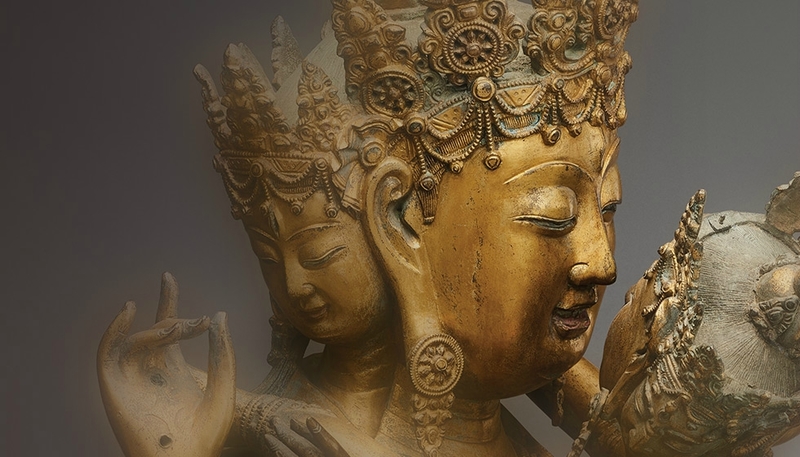








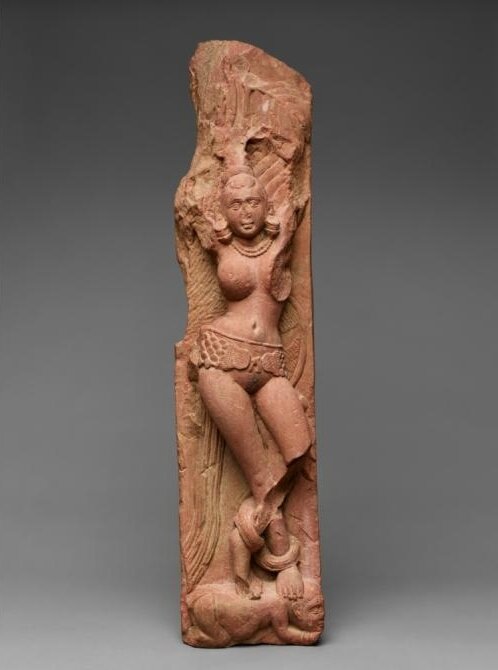

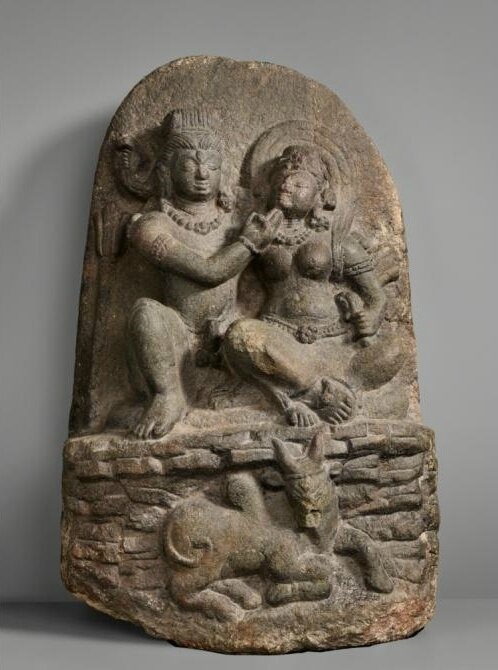
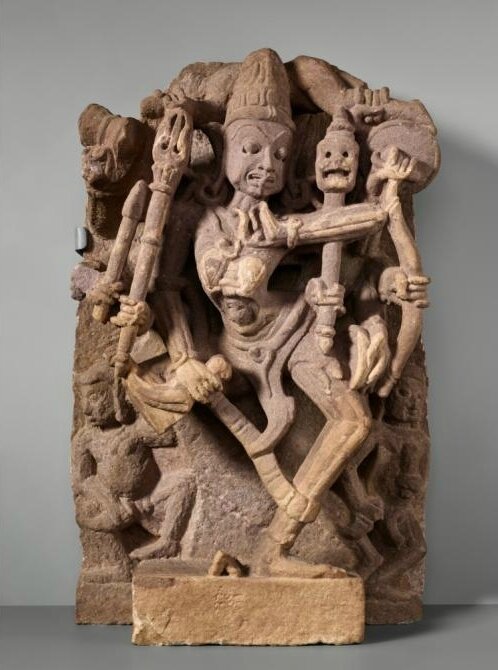

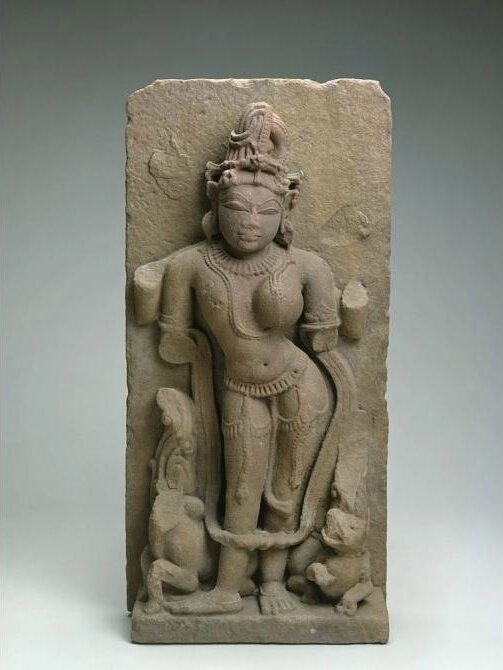



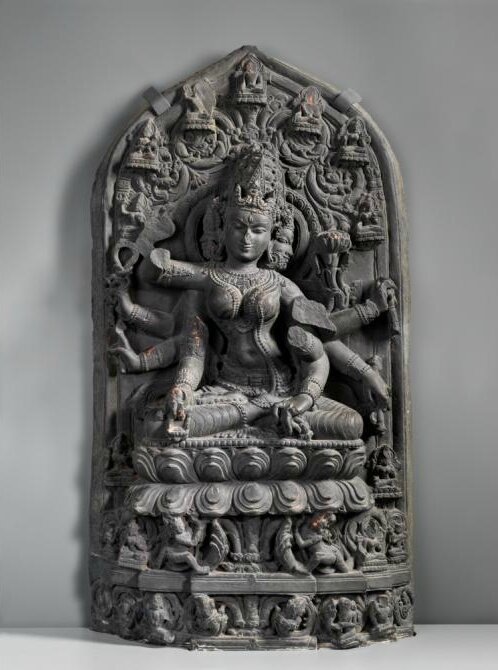




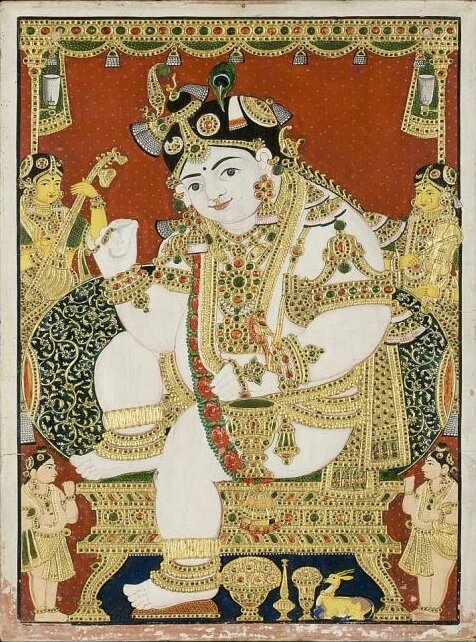


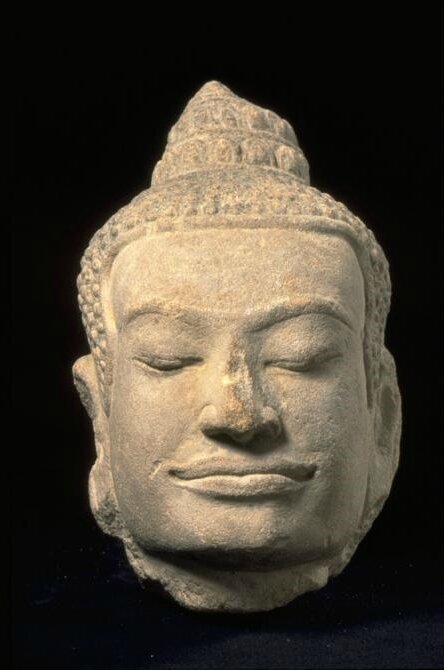






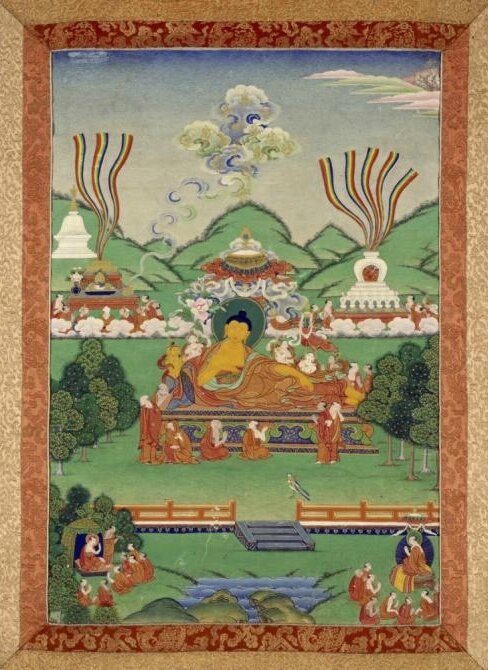






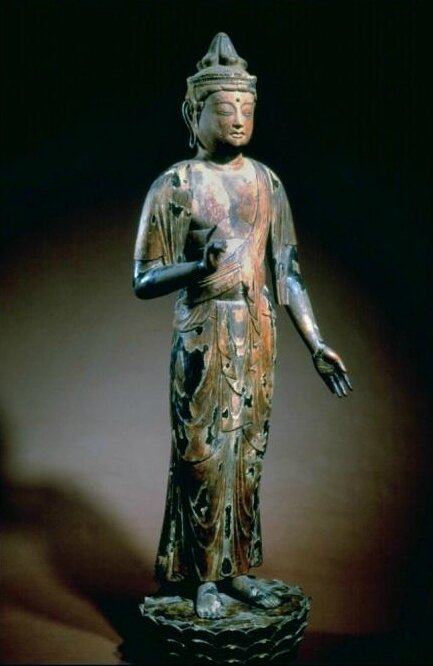

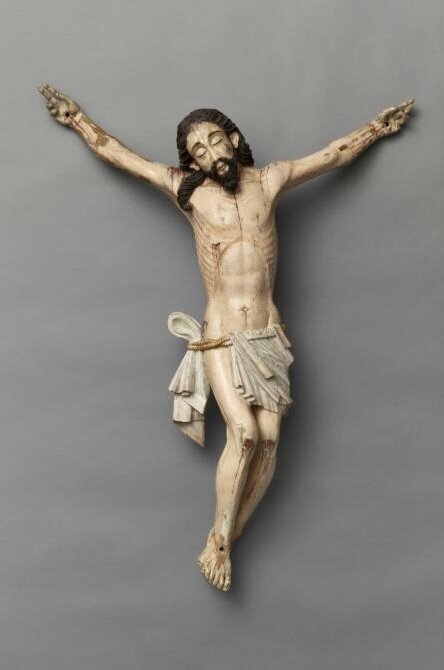


/image%2F1371349%2F20240423%2Fob_b6c4a6_telechargement.jpg)
/image%2F1371349%2F20240414%2Fob_fc4708_2024-nyr-22642-0956-000-a-dehua-figure.jpg)
/image%2F1371349%2F20240413%2Fob_120396_2024-nyr-22642-0941-001-an-exceptional.jpg)
/image%2F1371349%2F20240324%2Fob_0e02d1_181-1.jpg)